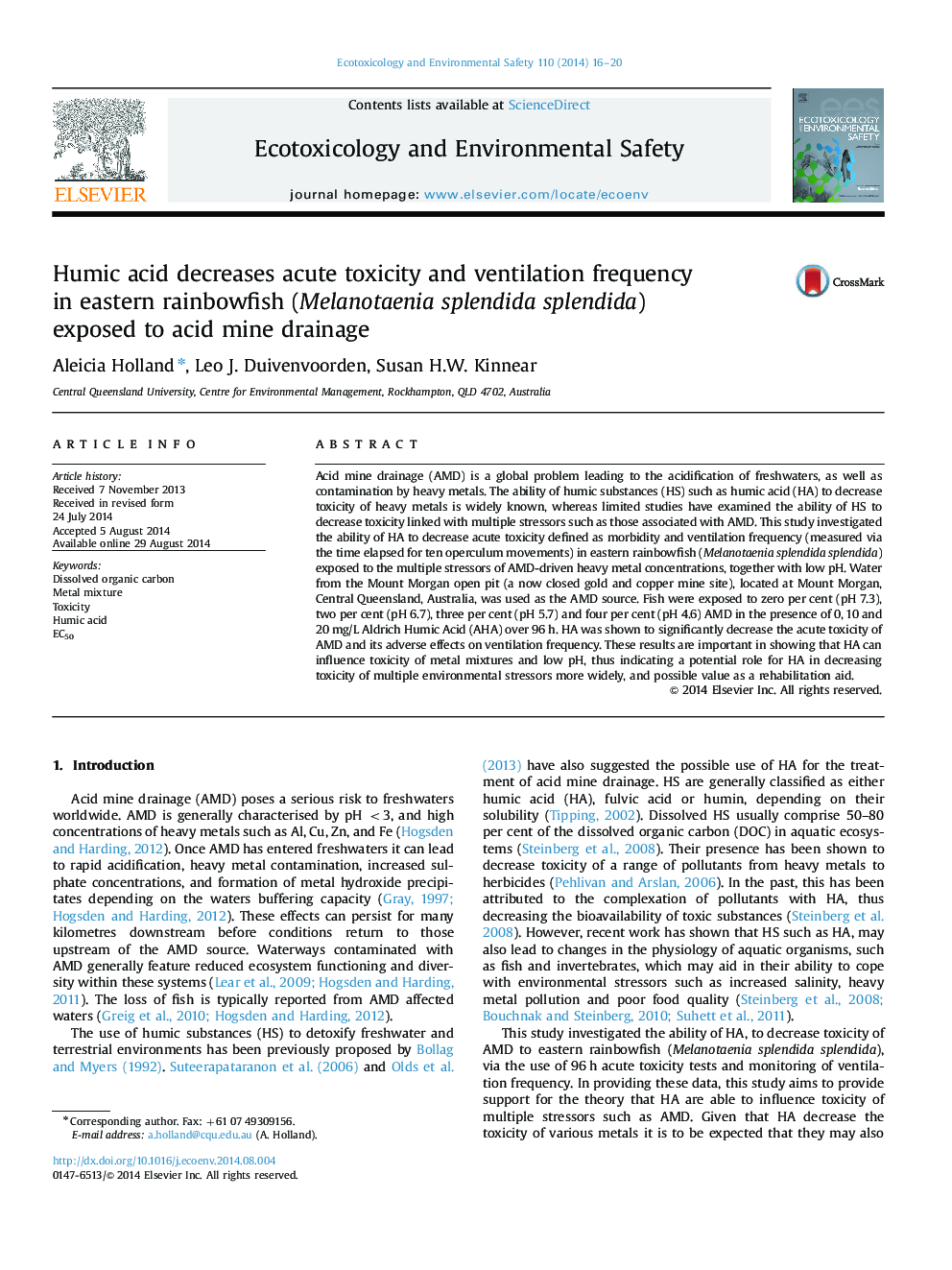| Article ID | Journal | Published Year | Pages | File Type |
|---|---|---|---|---|
| 4419926 | Ecotoxicology and Environmental Safety | 2014 | 5 Pages |
•Fish exposed to acid mine drainage over 96 h with and without added Aldrich humic acid.•Acute toxicity (morbidity) and ventilation frequency (time for ten operculum movements) monitored.•Aldrich humic acid was shown to decrease acute toxicity and ventilation frequency in fish exposed to acid mine drainage.
Acid mine drainage (AMD) is a global problem leading to the acidification of freshwaters, as well as contamination by heavy metals. The ability of humic substances (HS) such as humic acid (HA) to decrease toxicity of heavy metals is widely known, whereas limited studies have examined the ability of HS to decrease toxicity linked with multiple stressors such as those associated with AMD. This study investigated the ability of HA to decrease acute toxicity defined as morbidity and ventilation frequency (measured via the time elapsed for ten operculum movements) in eastern rainbowfish (Melanotaenia splendida splendida) exposed to the multiple stressors of AMD-driven heavy metal concentrations, together with low pH. Water from the Mount Morgan open pit (a now closed gold and copper mine site), located at Mount Morgan, Central Queensland, Australia, was used as the AMD source. Fish were exposed to zero per cent (pH 7.3), two per cent (pH 6.7), three per cent (pH 5.7) and four per cent (pH 4.6) AMD in the presence of 0, 10 and 20 mg/L Aldrich Humic Acid (AHA) over 96 h. HA was shown to significantly decrease the acute toxicity of AMD and its adverse effects on ventilation frequency. These results are important in showing that HA can influence toxicity of metal mixtures and low pH, thus indicating a potential role for HA in decreasing toxicity of multiple environmental stressors more widely, and possible value as a rehabilitation aid.
